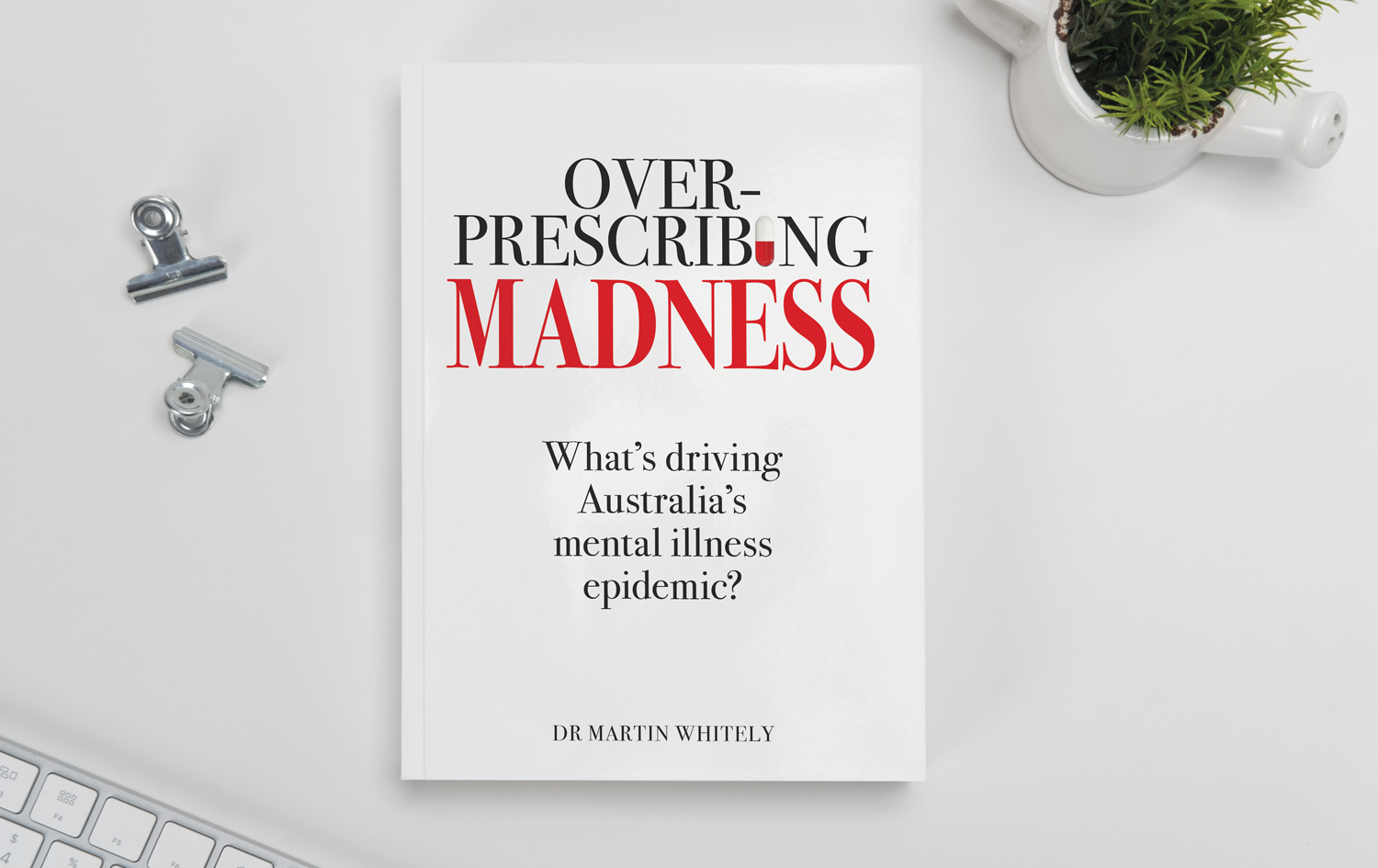 Mental health researcher Dr Martin Whitely argues in his new book that over-prescribing is driving Australia’s mental illness epidemic.
Mental health researcher Dr Martin Whitely argues in his new book that over-prescribing is driving Australia’s mental illness epidemic.
Australia has been admirably successful in limiting deaths from COVID-19, but this achievement has come at a considerable cost. Shutdowns, particularly in hospitality, retail and tourism, have cost jobs and caused business failures, and for many Australians social isolation has meant just that – isolation and loneliness.

Prominent Australian psychiatrists Professors Ian Hickie and Patrick McGorry predicted that these factors would result in a spike in suicides that would overshadow COVID-19 deaths. They called on governments, both state and commonwealth, to spend hundreds of millions more to fund mental health interventions.
Their call for extra mental health funding would be justified if the care on offer actually helped people distressed by unemployment, financial hardship and loneliness. But sadly, as explored in my new book, Over-prescribing Madness, what’s driving Australia’s mental illness epidemic, the evidence is that far too often the pill-dominant mental health care on offer, and other alternatives promoted by mental health leaders, do more harm than good.
In 2018, roughly one in six Australians took at least one mental health drug and since then prescribing rates have risen. Our reliance on pills is not new. In both 2000 and 2015, Australians were the second largest per capita users of antidepressants of the 30 OECD countries surveyed. Only tiny Iceland, with its frozen, dark, miserable North Atlantic winters, had a higher per capita antidepressant prescribing rate.
This invites an obvious question: is the lucky country really that miserable?
I contend that our high prescribing rates have nothing to do with Australians being disproportionately mentally ill. Rather a combination of salesmanship, questionable medical practice (overlooked by timid regulators) and cultural, commercial and political drivers see too many Australians hooked on a cycle of over-diagnosis and over-medication.
In essence:
- Australia has blindly followed America’s flawed DSM model for (over) diagnosing psychiatric disorders, and turning sadness into depression, immaturity into ADHD.
- A few local psychiatric thought leaders who promote and extend the medicalised model have dominated Australia’s debate about mental health.
- Most prescribing (particularly of antidepressants) is done by GPs with limited training and few other tricks in their toolbox.
- Patients and parents often demand quick fixes.
- Australia’s drug safety regulator, the Therapeutic Goods Administration, has (despite some recent improvement) been overly industry-friendly.
- The media have uncritically promoted ‘disease awareness’ and a medicalised ‘see your doctor for help’ approach.
There is no denying that for many people, mental illness can be debilitating, and that for a subset of these people, drugs – when used judiciously – are helpful. But too often the drugs that are used to treat psychiatric disorders create new disorders that are managed with other drugs.
Often the withdrawal effects from psychiatric drugs are worse than the initial problems they were supposed to treat. This iatrogenic suffering is often blamed on the patient’s re-emerging mental illness, and doses are increased and/or new medications are added.
The result is that many patients get locked into a vicious cycle of drugs creating harm, with more drugs added to address that harm; meanwhile medication sales soar and Big Pharma rakes in iatrogenic profits (profits caused by creating harm).
Some of the revelations in Over-prescribing Madness may seem unbelievable, many of them are inconvenient; but Australians really are spending an awful lot of money, time and energy, following very bad advice and taking drugs that too often make them sicker, sadder and madder.

